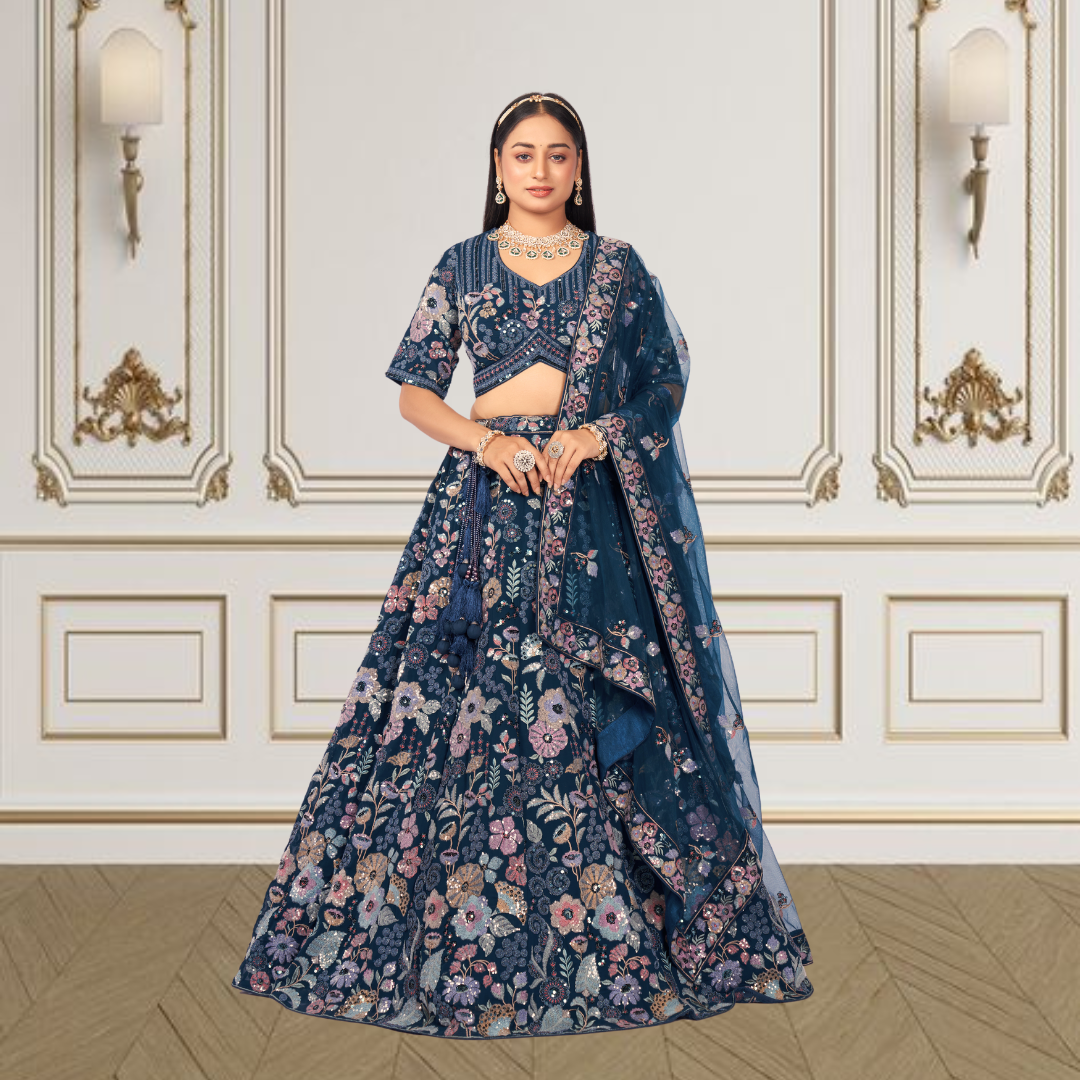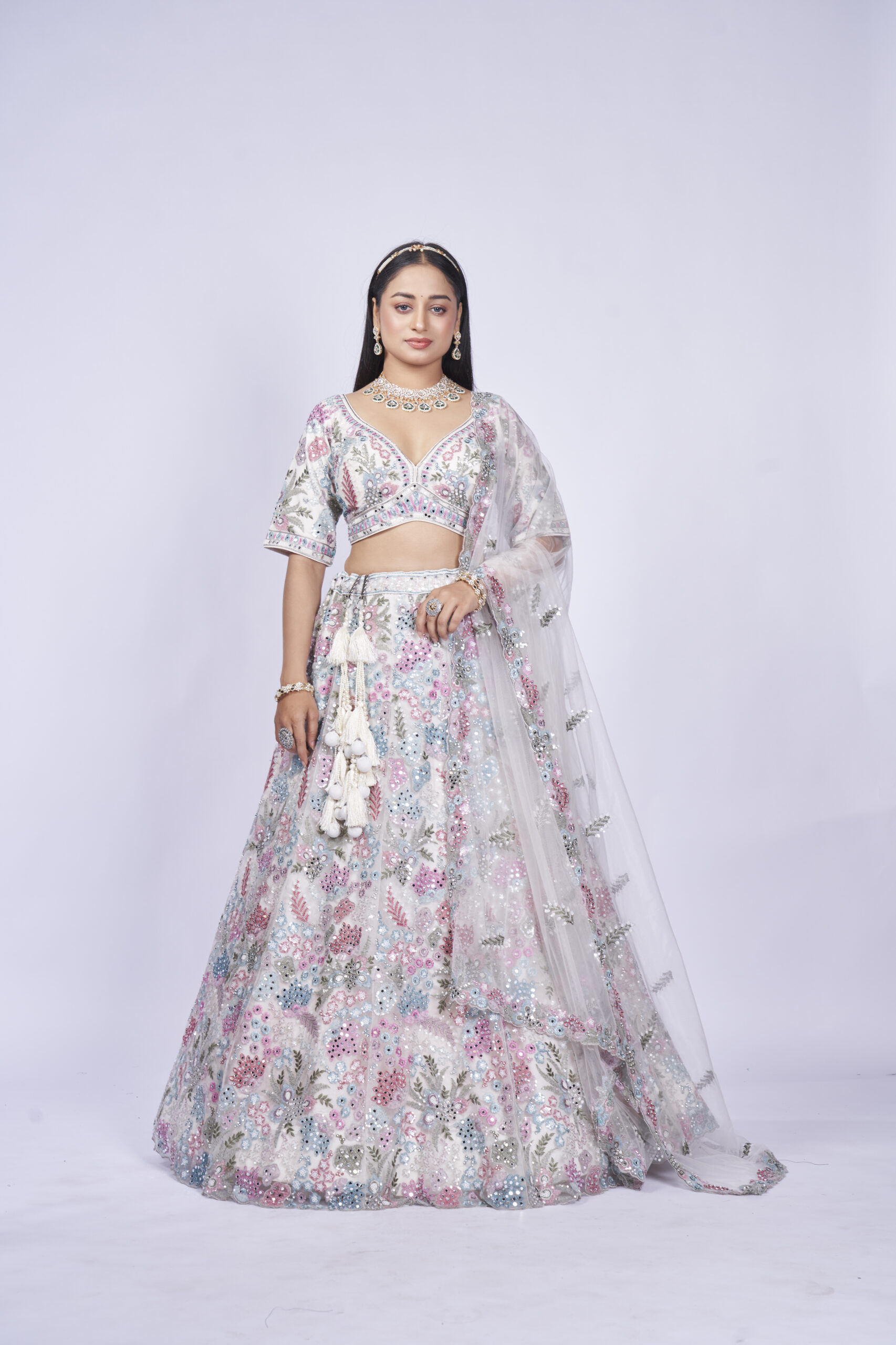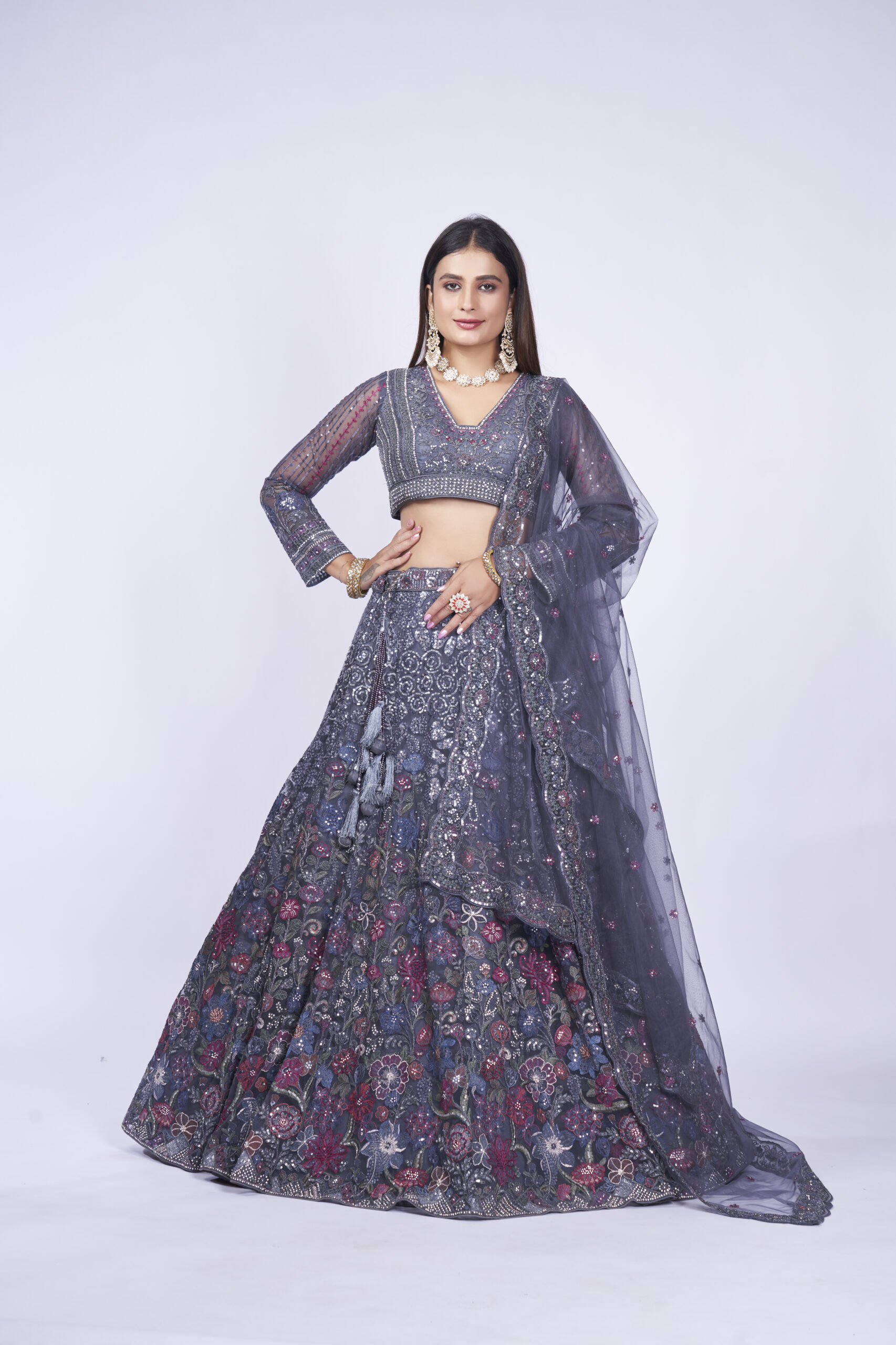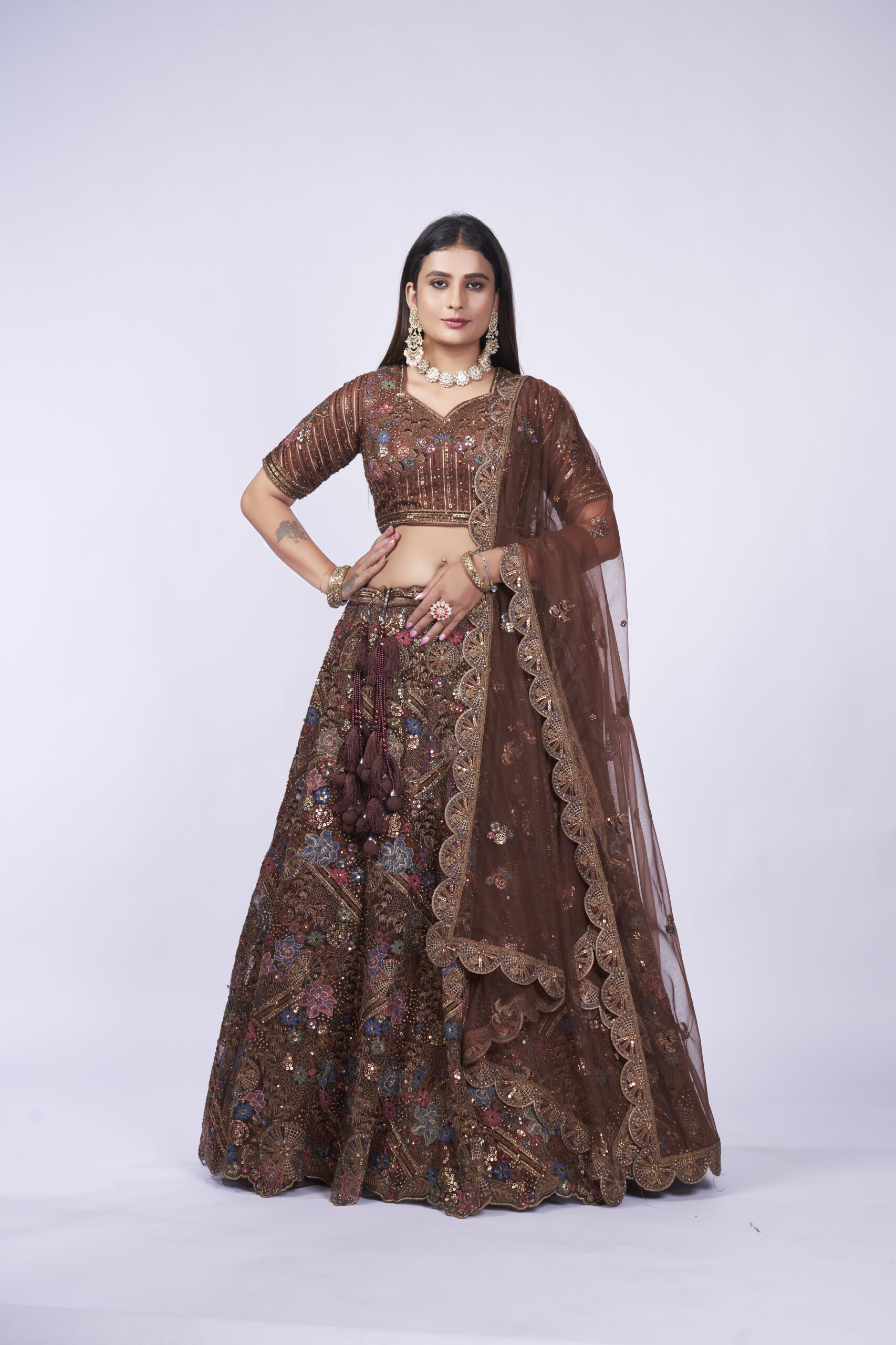Choosing the perfect wedding attire is a pivotal decision for every bride, symbolizing tradition, elegance, and personal style. While both sarees and lehengas hold cultural significance, each offers unique attributes that cater to different preferences and wedding themes. Delving into the pros and cons of both options can help brides make an informed decision, ensuring their attire reflects their vision for this momentous occasion.
1. The Timeless Saree:
Pros:
- Cultural Heritage: The saree embodies centuries of tradition and cultural richness, making it a symbolic choice for brides embracing their heritage.
- Versatility: Sarees come in a plethora of fabrics, styles, and draping techniques, allowing brides to customize their look based on personal preference and regional traditions.
- Elegance and Grace: A well-draped saree exudes timeless elegance, accentuating the bride’s silhouette and natural beauty.
- Comfort: Lightweight fabrics like silk, chiffon, and georgette ensure comfort throughout long ceremonies and celebrations.
Cons:
- Draping Expertise: Mastering the art of saree draping requires practice and skill, potentially adding complexity and time to preparation.
- Limited Mobility: Depending on the drape and fabric, sarees may restrict movement compared to lehengas, which can be a consideration during intricate rituals and dance performances.
2. The Glamorous Lehenga:
Pros:
- Opulent Aesthetic: Lehengas are synonymous with grandeur and opulence, featuring elaborate embroidery, vibrant colors, and voluminous skirts that create a striking visual impact.
- Ease of Wear: Unlike sarees, lehengas typically involve wearing a pre-stitched skirt and blouse, offering ease and convenience.
- Customization: Brides can personalize their lehenga with intricate embroidery, embellishments, and modern cuts to align with personal style and wedding theme.
- Comfort: Modern lehengas are designed with lightweight fabrics and ergonomic cuts, ensuring comfort without compromising on style.
Cons:
- Cultural Adaptation: While lehengas have gained popularity, some brides may feel a stronger cultural connection with sarees, influencing their choice.
- Storage and Maintenance: Lehengas, especially heavily embroidered ones, may require careful storage and maintenance to preserve their beauty over time.
Making an Informed Decision:
Considerations:
- Personal Preference: Reflect on cultural significance, comfort, and personal style to determine whether a saree or lehenga aligns with your vision for the wedding day.
- Wedding Theme: Match your attire choice with the overall theme and ambiance of the wedding venue and ceremonies.
- Practicality: Factor in logistical considerations such as ease of movement, climate, and duration of festivities when making your decision.
Conclusion:
The choice between a saree and lehenga for the wedding attire is a deeply personal decision, influenced by cultural traditions, aesthetic preferences, and practical considerations. Whether you opt for the timeless elegance of a saree or the glamorous allure of a lehenga, each choice promises to transform you into a radiant bride, celebrating love and tradition on your special day.




